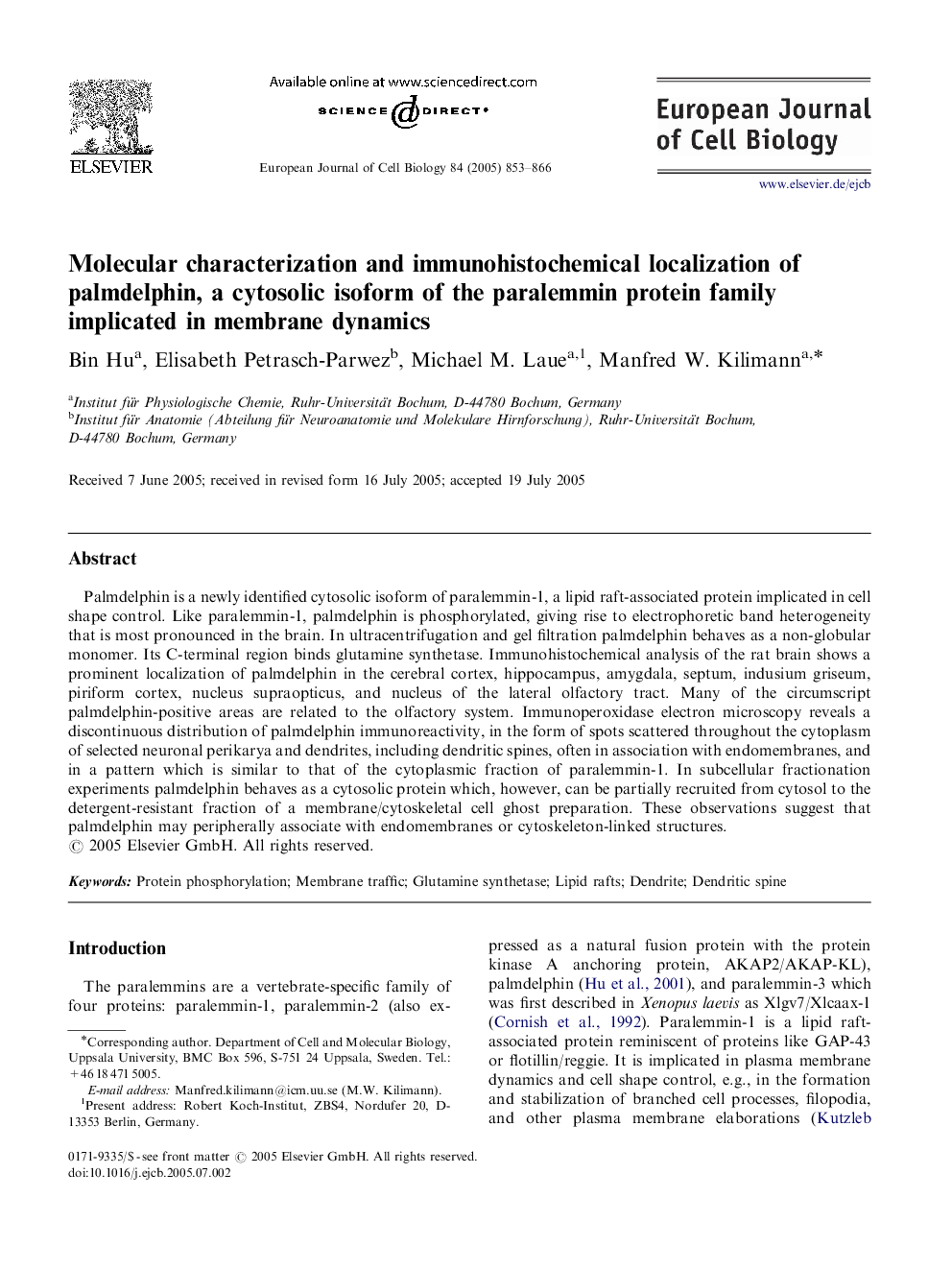| Article ID | Journal | Published Year | Pages | File Type |
|---|---|---|---|---|
| 9912406 | European Journal of Cell Biology | 2005 | 14 Pages |
Abstract
Palmdelphin is a newly identified cytosolic isoform of paralemmin-1, a lipid raft-associated protein implicated in cell shape control. Like paralemmin-1, palmdelphin is phosphorylated, giving rise to electrophoretic band heterogeneity that is most pronounced in the brain. In ultracentrifugation and gel filtration palmdelphin behaves as a non-globular monomer. Its C-terminal region binds glutamine synthetase. Immunohistochemical analysis of the rat brain shows a prominent localization of palmdelphin in the cerebral cortex, hippocampus, amygdala, septum, indusium griseum, piriform cortex, nucleus supraopticus, and nucleus of the lateral olfactory tract. Many of the circumscript palmdelphin-positive areas are related to the olfactory system. Immunoperoxidase electron microscopy reveals a discontinuous distribution of palmdelphin immunoreactivity, in the form of spots scattered throughout the cytoplasm of selected neuronal perikarya and dendrites, including dendritic spines, often in association with endomembranes, and in a pattern which is similar to that of the cytoplasmic fraction of paralemmin-1. In subcellular fractionation experiments palmdelphin behaves as a cytosolic protein which, however, can be partially recruited from cytosol to the detergent-resistant fraction of a membrane/cytoskeletal cell ghost preparation. These observations suggest that palmdelphin may peripherally associate with endomembranes or cytoskeleton-linked structures.
Keywords
Related Topics
Life Sciences
Agricultural and Biological Sciences
Plant Science
Authors
Bin Hu, Elisabeth Petrasch-Parwez, Michael M. Laue, Manfred W. Kilimann,
